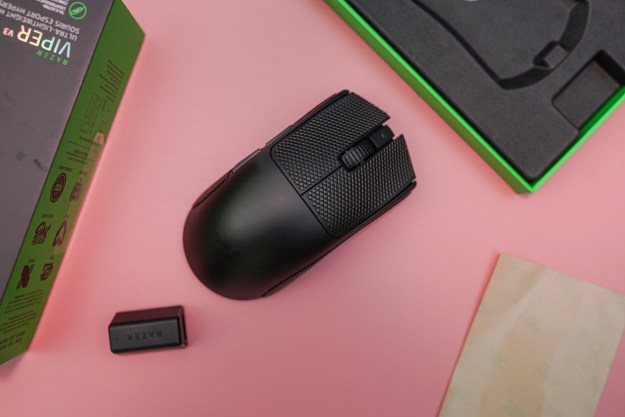
Roccat describes the Kiro as “superdextrous,” by which they mean it can be changed from a left-handed device to a right-handed one. This is done by swapping out the side panels. There are four swappable modules included: a left blank, a left piece with two buttons, a right blank, and a right piece with two buttons.
The idea is that you can customize your mouse with four total combinations: buttons on the left only, buttons on the right only, buttons on both sides, or blanks on both sides. Roccat states that future 3D support will allow for even more customization.
Like the Lua, the Kiro keeps things basic. You have back and forward buttons on either side (or both sides, if you’d like), left and right click buttons, and a 2D scroll wheel. The Kiro is topped with a sweat-resistant soft touch coating. Inside, you will find Omron switches.
The Kiro features a customizeable 2000-dpi Pro-Optic R2 sensor and an overdrive mode. When switched on, the dpi is doubled to 4,000, but this simulated increase may affect tracking. Roccat says that this is countered by the Kiro’s 32-bit MCU (microcontroller), based on ARM architecture.

Lighting can be customized with a palette of 16.8 million colors. Effects and changing color patterns can be configured via Roccat’s Swarm driver.
As is the case with other Roccat products, the Kiro is only compatible with Windows machines, but there are third party open source drivers for Linux users. Roccat themselves have publicly announced their support of these modifications from “enthusiastic programmers.”
The Kiro can be ordered from Roccat’s website for about $55, and will likely be added to the manufacturer’s Amazon page soon.
Editors' Recommendations
- If you grew up playing typing games, you’ll adore Cryptmaster
- It’s time to stop ignoring the CPU in your gaming PC
- AMD’s graphics card sales just took a nosedive
- It’s time to stop settling for a noisy gaming PC
- 3 great Xbox Game Pass titles you should try this weekend (April 26-28)


